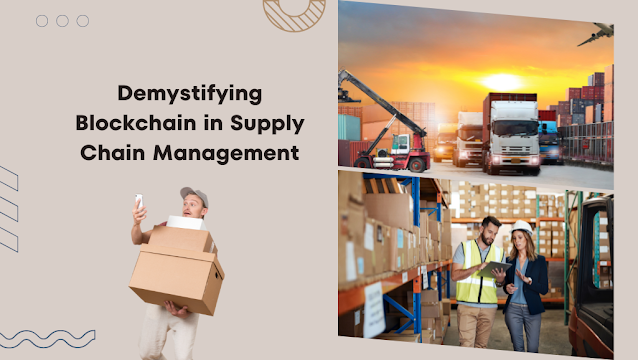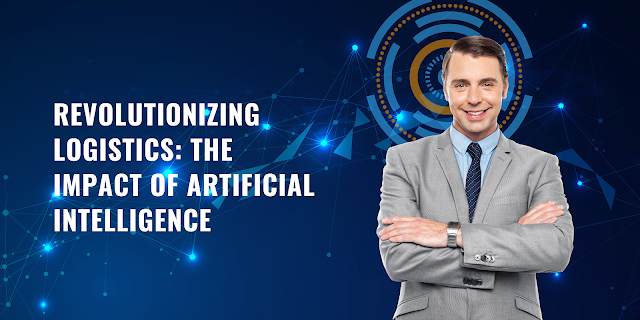Revolutionizing Logistics: The Role of AI in Modern Supply Chains
In an era marked by rapid technological advancements, the integration of artificial intelligence (AI) into various industries has led to transformative changes, and the logistics sector is no exception. The traditional supply chain model is evolving, and AI is emerging as a driving force behind this transformation. From optimizing routes to enhancing demand forecasting, AI is revolutionizing logistics, reshaping how goods are moved, managed, and delivered.
The Power of AI in Route Optimization
One of the significant challenges in logistics is optimizing routes for efficient transportation. This challenge is compounded by variables such as traffic congestion, weather conditions, and delivery windows. AI-powered algorithms are now being employed to tackle these complexities.
Machine learning algorithms analyze historical and real-time data to predict traffic patterns and recommend the most optimal routes. As these algorithms continue to learn from their experiences, they become more accurate in their predictions and route recommendations. This not only minimizes transportation time but also reduces fuel consumption and carbon emissions, contributing to a more sustainable supply chain.
Demand Forecasting and Inventory Management
Effective demand forecasting is critical for preventing stockouts and reducing excess inventory. AI excels in this area by analyzing a multitude of data sources, including historical sales data, social media trends, economic indicators, and even weather patterns. By identifying correlations and patterns, AI algorithms can provide more accurate demand forecasts.
Accurate demand forecasts enable companies to adjust their inventory levels accordingly, reducing carrying costs and optimizing storage space. This, in turn, leads to a leaner and more responsive supply chain, ensuring that products are available when and where they are needed.
Enhancing Last-Mile Delivery
Last-mile delivery, the final leg of the delivery journey to the customer's doorstep, presents unique challenges. AI-driven solutions are being developed to address these challenges and improve the efficiency of this crucial stage.
Drones and autonomous delivery vehicles, equipped with AI navigation systems, can navigate through complex urban environments, avoiding obstacles and selecting the fastest routes. AI-powered delivery bots can also bring packages directly to customers in densely populated areas, reducing the burden on traditional delivery methods.
Warehouse Automation and Robotics
Within warehouses, AI-driven robotics are transforming how goods are stored, picked, and packed. Automated guided vehicles (AGVs) and robotic arms collaborate seamlessly to move products around the warehouse floor. AI algorithms orchestrate these movements, optimizing the allocation of resources and reducing the time taken to fulfill orders.
Additionally, AI-enhanced systems can accurately identify and locate items in the warehouse, reducing picking errors and improving order accuracy. This not only enhances operational efficiency but also enhances customer satisfaction.
Predictive Maintenance for Fleet Management
Maintaining a fleet of vehicles is a costly endeavor, particularly when unexpected breakdowns occur. AI-driven predictive maintenance is alleviating this challenge by monitoring the condition of vehicles and predicting when maintenance is required.
Sensors within vehicles collect data on various parameters such as engine health, tire pressure, and brake wear. AI algorithms analyze this data to detect patterns indicative of impending issues. By addressing maintenance needs proactively, companies can avoid costly breakdowns, reduce downtime, and extend the lifespan of their fleet.
Challenges and Considerations
While AI holds immense potential for transforming logistics, its implementation is not without challenges. Data privacy and security concerns must be addressed, especially when dealing with sensitive customer information and proprietary business data. Moreover, integrating AI into existing systems requires investment in technology, training, and infrastructure.
Furthermore, the dynamic nature of logistics means that AI algorithms must continuously adapt to new variables and circumstances. Regular updates and refinements are essential to ensure that the algorithms remain accurate and effective.
Conclusion
The integration of AI into the logistics industry is ushering in a new era of efficiency, responsiveness, and sustainability. From optimizing routes and enhancing demand forecasting to improving last-mile delivery and warehouse operations, AI is redefining how supply chains operate. As AI technology continues to advance, logistics companies that embrace these innovations will be better positioned to navigate the complexities of the modern business landscape and deliver unparalleled service to their customers.




Comments
Post a Comment